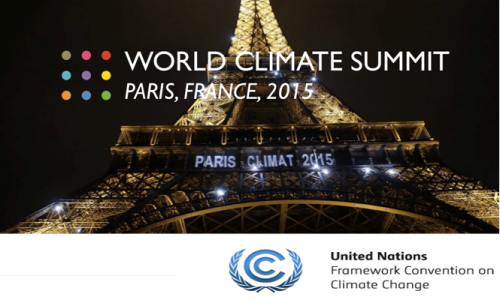This article won me the 1st Runners-Up position in the January 2021 Edition of Prayatna, the Magazine of Social Responsibility Forum, SBM, NMIMS Mumbai. I had originally written it for a national article writing competition for The Hindu in 2015.
Climate change is a transformation in the distribution of weather patterns over long periods of time that range from decades to millions of years. Since the formation of the earth 4.54 billion years ago, the earth has undergone 5 major extinctions, mostly due to these climatic changes i.e. a cyclic pattern between the ice ages and the warmer ones. And we are heading on towards the current Holocene extinction event very fast. Most of us shoo off this topic as merely an exaggeration about global warming, but it is actually happening, and if we visualize the situation in the terms of a country like India, the situation is worsening with each passing day. It is indeed a shame for us that Chennai has overtaken Delhi as the most polluted city of the world.

India puts a great pressure on its existing natural resources, even more profoundly than its counterparts because it is a developing nation. The water table is depleting fast, the summers are getting longer and hotter, and the rain spells are getting erratic. The sea levels are rising due to the polar ice caps and glaciers melting at a pace like never before.

The biggest crisis of India is that its population is dwelling in ignorance. Most of the people have no idea about global warming, and even if they have, they are not bothered about it. And our nation has a plethora of other problems, which need greater attention than the climate. Illiteracy and lack of basic education and health facilities in many parts of rural India top the chart.

Most of the people in our country do not have the purchasing power for food and fuel. Immigration to the cities in the search for a better life adds to the pressure on the existing limited drinking water and electricity. However, the pollution contributed by the richer nations should not be compared with the pollution coming from the poorer ones; the former use it for the increasing lifestyle of luxury and comfort, while the latter utilize it for their survival. Today, necessity has become a luxury, due to the ever increasing greed of humans. And global warming is the perfect example of this phenomenon, disrupting forests, lives and livelihoods.
Nearly 60% of the population is agrarian in nature, and our country has more than a billion mouths to feed. Agriculture takes up nearly 90% of the fresh water resources of our country, and with depletion of the water table and with the increase in the production of water demanding crops like rice and wheat, the situation is getting grim. We are facing the aftermath of the Green Revolution. Frequent drought spells are getting common mainly in the central and the eastern parts of the nation. Denganmal, a village in Maharashtra, where people keep more than one wives just to fetch water from long distances should be an eye opener for all of us. Latest statistics report that India will run out of drinking water by the year 2040. Farmer suicides are a reminder for us that the provider of food has himself no food security.

The change in the sea levels is leading to powerful cyclones, hurricanes and tsunamis every year. Salt water intrusion in low lying agricultural plains could lead to food insecurity , spread of water related diseases and lack of fresh water.
India houses 3 biodiversity hotspots from 32 present: the Indo-Burma region, the Western Ghats and the Himalayas. The endemic amphibian species of the Western Ghats are fast dying out. The rare and exotic plants of the Himalayas are fast disappearing even before we get to know about their astounding medicinal properties. India has now only 23.07% of its forests left. Illegal logging for agriculture, grazing lands, urbanization and commercial plantation are the major causes of deforestation.

Destruction of the wild habitats is leading to a more exposed interaction of humans and animals, and hence, strange and often incurable diseases are cropping up from the warmer parts of the planet. The maladies are spreading on to the colder regions too, due to the gradual increase in the average temperature of the earth, which has increased by 0.6 degrees in the last century.

Greater political and bureaucratic attention is needed to diversify the livelihoods of the poor people to reduce their vulnerability. We need to have a significant increase of targeted investments in crop production and management e.g. crop rotation, mixed crop production and organic farming and advanced irrigation systems like drip irrigation and water sprinkler approaches, which should be given to smaller farmers at a subsidised rate. We need to utilise the maximum amount of our existing agricultural lands by using genetically hybrid crops which are more tolerant to the environmental stresses like droughts and floods. There is an immediate need for placing water meters in every Indian home for checking the water usage.
Afforestation will not only help in conserving forests and decreasing desertification, it will also help restoring the water table, in tackling natural disasters and in regaining the livelihoods of the people who are dependent on forestry. Crop pollination needs mutual coordination between the plants and the pollinators like honey bees. Hence, this would ensure maximum food production naturally.
It takes about 10 kgs of grain to produce 1 kg of meat. This contributes to the global warming and our failing health. Hence, people need to shift from a non vegetarian to a vegetarian diet. Buying fresh produce would lead to the practice of rooftop hydroponics, which is cheap and easy to produce, and would definitely act as a combat towards excess plastic packaging layers. Use of plastic bags need to be banned immediately. People need to use cloth/jute bags for getting their groceries.

The good old 3Rs : Reduce, Reuse and Recycle still hold true. We need to reduce our usage of packaged materials. We need to buy less. We need to reuse old clothes, books, toys and stuff. And finally, newspapers, bottles and scrap should be recycled. Scrap materials from used automobiles and e wastes should be treated properly and can be re used. Instead of recycling, we can burn the waste materials in waste incinerators and can generate electricity.

The development of a country largely depends upon the growth of the small scale industries. Amount of carbon produced is the benchmark of development. The small scale industries cannot cope up with the Clean Development Mechanisms initiated by the international communities. Hence, the laws enforced for the national and the international giants in the markets should not be imposed on these units. Rather, the government should bring on some innovative solutions in collaboration with the national leading institutions at a subsidised rate so that they can both thrive and prosper under the new laws, without compromising their income.

More number of nuclear power plants need to be setup in our country. And most importantly, the myths associated with the nuclear effects need to be sorted out first. Solar based water pumps in certain areas of Sambalpur district in Odisha has led to the efficient utilisation of water with the demonstration of an excellent use of solar energy. The Canal Solar Power Project launched in Gujarat, uses 19,000 Kilometers long network of Narmada canals across the state for setting up solar panels to generate electricity. Energy efficient systems are the need of the hour. Our country is a fast growing economy, with a lot of business opportunities. Hence, alliances with powerhouses can serve as a blessing for those 400 million people who do not have a proper access to electricity. Biogas is being implemented by village people since long, and is a perfect example of utilisation of organic farming. Using natural products is only possible if sustainable development is undertaken hands on with technologically feasible solutions for the environment.

India, being an affordable holiday destination for many, can serve as a heaven for ecotourism. It leads to the preservation of the nature as well as works towards the protection and enhancement of job opportunities for the forest loving communities.

When we consume less energy, we spend less on energy. Hence, it is cost effective. Thus, we need to create laws for automobile and aviation industries, furnaces and miscellaneous factories to keep a check on their emissions, as per the standard norms decided by the governing bodies. By purchasing energy efficient gadgets, we can reduce our carbon footprint.
Awareness is need to be created amongst people for safer practices for nutrition, hygiene and sanitation, so that people are alert towards their changing environmental conditions and get more health conscious. More number of nutrition programs and clinics need to be functional in the rural areas for the proper diagnosis and the treatment of the people in a short period of time. Telemedicine and Any Time Medicine technologies can bring radical changes in the history of treatment.

There is a need for more number of people who can enhance sustainability development like agricultural scientists, ecologists and biotechnologists. People need to be more aware of their opportunities as scientists and the role they have to play in the society. Extra amount of the country’s budget needs to be spent on the research and development sectors to bring on more innovative and challenging solutions for tackling the environmental issues.
Keeping the frequent natural disasters in view, there is an urgent need for advanced weather forecasting systems and their timely broadcasting in our country to ensure minimum damage to lives and property.
We need to promote cities with excellent public transport facilities and need to encourage them to use ethanol and CNG. We need to convince our farmers to grow bio fuel crops like jatropha, camelina, switch grass and willows; along with normal food crops. These grow well in poor soil and use up less fertilizers. These are high in cellulose, and produce low carbonic fuels.

The solutions to these challenges are definitely not simple, and are not at all possible if they are only implemented by the government. Participation of the common mass is equally important to make these projects a success. More awareness is needed to be created amongst the public about their role towards the environment and their future. There is so much of positivity around us. We just need to make them happen.
